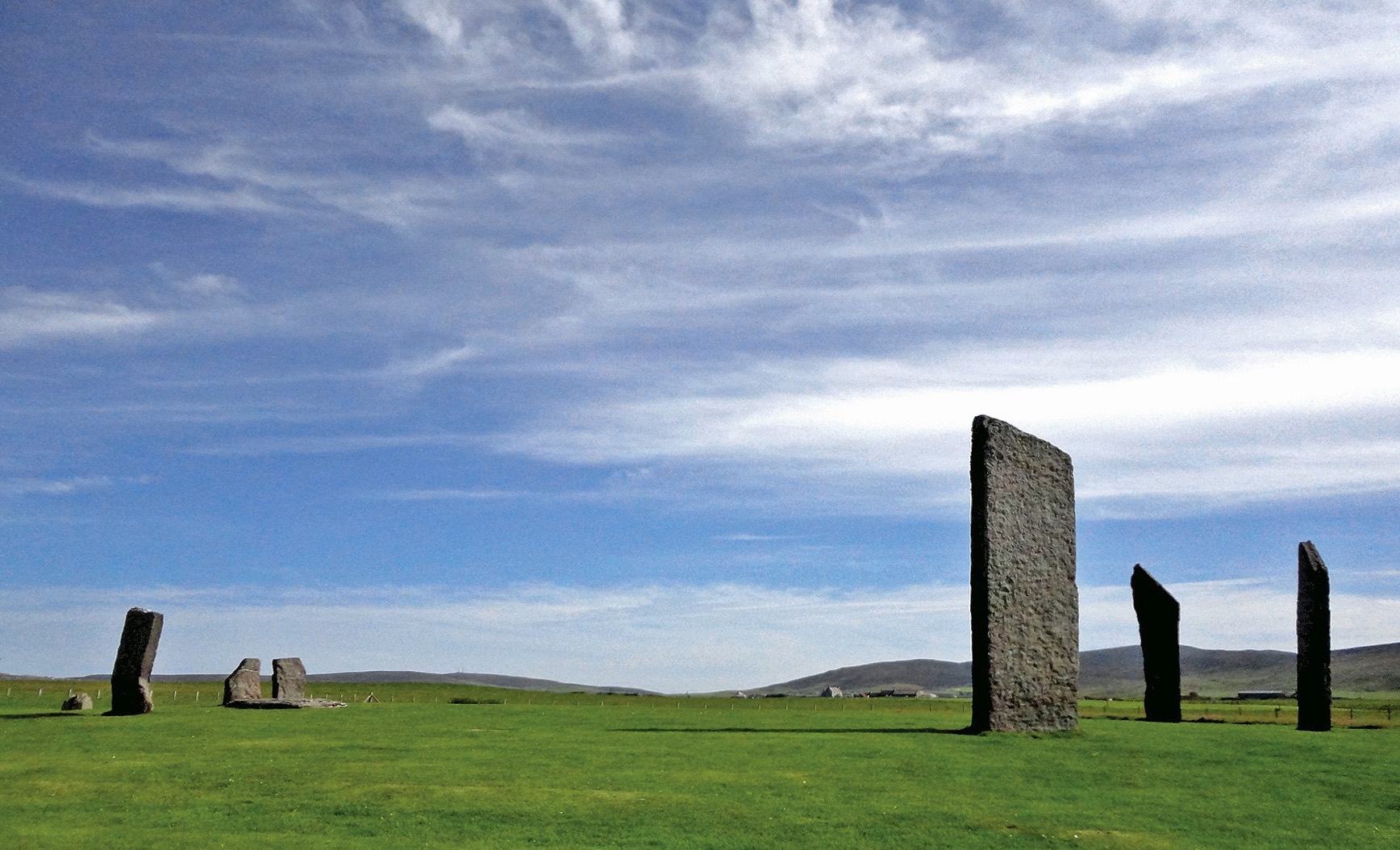Scotland's Ancient Stone Circles Built to Align with Solstice Sun

Scientists have statistically proven that two 5,000-year-old stone circles located on islands in Scotland have a series of astronomical alignments that ancient builders intentionally created.
The stone circles were created in such a way as to create alignments between the sun and the stones, along with various landscape features, during winter and summer solstices. The circles also align with the moon during a "major lunar standstill," an event that happens once every 18.6 years.
The summer and winter solstices mark the longest and shortest days of the year, respectively — when the sun is highest and lowest in the sky. During a major lunar standstill (the next one will occur in 2025), the moon can move through the sky at points that appear very high or very low on the horizon.
The two stone circles are located at sites called Callanish, which is on the Isle of Lewis, and Stenness, on the Orkney Isles. [In Photos: Hidden Monuments Discovered Beneath Stonehenge]
Considered the "first great circles of Scotland," Callanish and Stenness consist of 16 and 12 stones, respectively, wrote Gail Higginbottom, a visiting research fellow at the University of Adelaide in Australia, and Roger Clay, a professor at the Australian National University in Canberra, in an article recently published in the Journal of Archaeological Science: Reports.
The two researchers noted that by 2,800 years ago, hundreds of stone circles had been constructed in Britain, including the famous example at Stonehenge. "The number of these monuments, and the fact that they were likely constructed over a far longer time frame than any other megalithic monument type highlights their continual relevance for Neolithic and Bronze Age cultures," wrote Higginbottom and Clay in their journal article.
Statistically proving it
Scientists have long suspected that these two stone circles were aligned with the solstices and major lunar standstill. Journal articles published at least as far back as the 1950s have presented possible alignments. Additionally, numerous YouTube videos record possible alignments involving the solstices and major lunar standstills at Callanish (the last major lunar standstill occurred in 2006). The challenge is statistically proving that these alignments are intentional and not the result of random chance, said Higginbottom and Clay in their paper.
Get the world’s most fascinating discoveries delivered straight to your inbox.
The researchers identified eight possible alignments involving the solstices and major lunar standstill at Callanish and six more possible alignments at Stenness. For instance, if you are in the center of the circle at Callanish during the summer solstice you will see the sun rise over one of its stones. Also if you are at Stenness during the major lunar standstill, on a day when the moon appears at the highest point on the horizon, the last glimmer of the moon will occur behind one of its stones.
The investigators then used a series of statistical tests to try to determine the chances that these possible alignments were nothing but chance. Results showed that there was only a 1.25-percent possibility that the alignments at Callanish were entirely chance and a 3.75-percent possibility that the alignments at Stenness were due to chance.
The calculations also showed that "the likelihood of the monuments being astronomical is above 97.87 percent for Stenness and 97.87 percent for Callanish," wrote Higginbottom and Clay in their paper. In other words, the alignments are likely not random, and instead the ancient builders intentionally constructed the circles to create alignments with the solstice sun and the major lunar standstill, the researchers said.
"Nobody before this has ever statistically determined that a single stone circle was constructed with astronomical phenomena in mind — it was all supposition," Higginbottom said in a statement. "This research is finally proof that the ancient Britons connected the Earth to the sky with their earliest standing stones, and that this practice continued in the same way for 2,000 years."
Original article on Live Science.

Owen Jarus is a regular contributor to Live Science who writes about archaeology and humans' past. He has also written for The Independent (UK), The Canadian Press (CP) and The Associated Press (AP), among others. Owen has a bachelor of arts degree from the University of Toronto and a journalism degree from Ryerson University.
